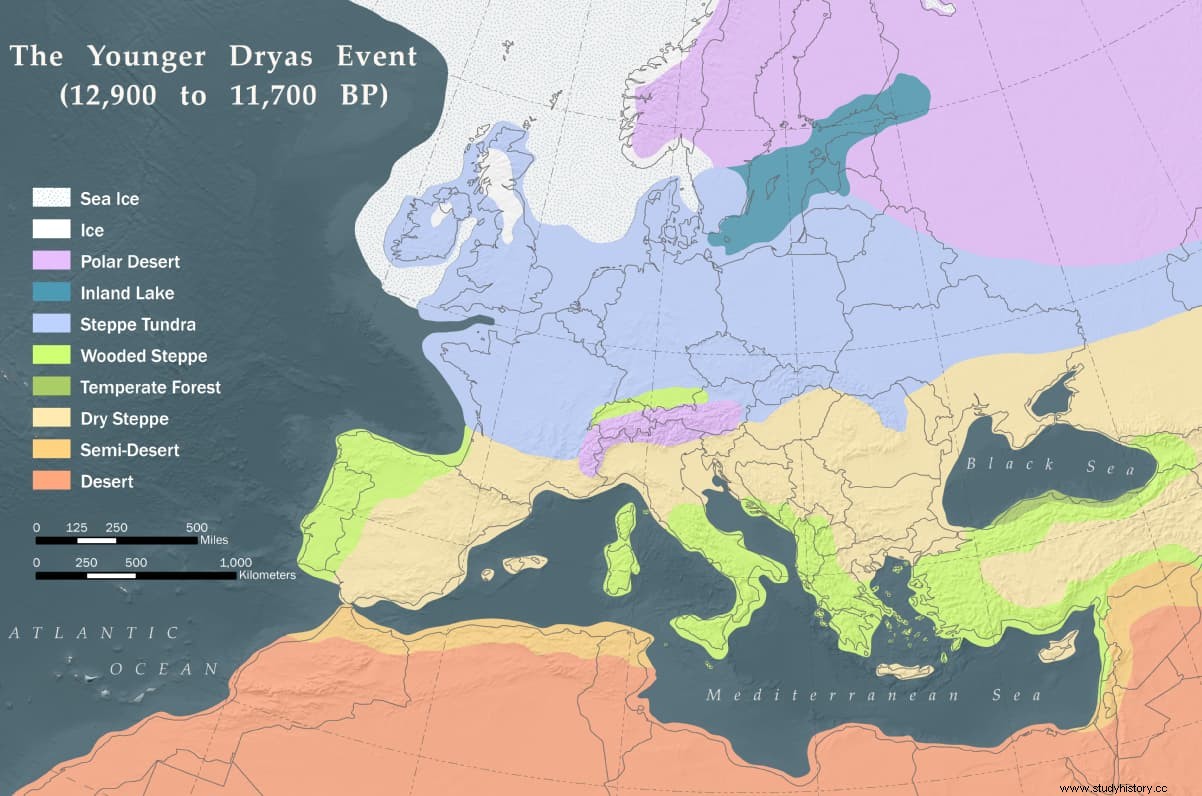A new study led by researchers at the University of Arizona may have solved two mysteries that have long baffled paleoclimate experts:Where did the ice sheets that marked the last ice age more than 100,000 years ago come from, and how? could they grow so quickly?
Understanding what drives Earth's glacial-interglacial cycles - the periodic advance and retreat of ice sheets in the Northern Hemisphere - is no easy task, and researchers have devoted considerable effort to explaining the expansion and shrinking of ice sheets. large masses of ice for thousands of years. The new study, published in the journal Nature Geoscience , proposes an explanation for the rapid expansion of ice sheets that covered much of the northern hemisphere during the most recent ice age, and the conclusions could also apply to other ice ages throughout Earth's history.
About 100,000 years ago, when mammoths roamed the Earth, the climate of the Northern Hemisphere fell into a deep freeze that allowed the formation of huge ice sheets. Over a period of about 10,000 years, local mountain glaciers grew and formed large ice sheets that covered much of present-day Canada, Siberia, and northern Europe.
Although it is widely accepted that the periodic "wobble" of the Earth's orbit around the sun triggered a summer cooling of the Northern Hemisphere that triggered the onset of widespread glaciation, scientists have struggled to explain the extensive ice sheets. that covered much of Scandinavia and northern Europe, where temperatures are much milder.
Unlike the cold Canadian Arctic archipelago, where ice forms easily, Scandinavia should have remained largely ice-free due to the North Atlantic Current, which brings warm water to the shores of northwestern Europe. Although the two regions are located at similar latitudes, Scandinavian summer temperatures are well above freezing, while temperatures in large parts of the Canadian Arctic remain below freezing during the summer, according to the researchers. Because of this discrepancy, climate models have had trouble explaining the extensive glaciers that advanced across northern Europe and ushered in the last ice age, said study lead author Marcus Lofverstrom.
The problem is that we don't know where those ice sheets came from (in Scandinavia) and what caused them to expand in such a short time said Lofverstrom, associate professor of geosciences and director of the Earth System Dynamics Laboratory at the University of Arizona.

To find answers, Lofverstrom helped develop an extremely complex Earth system model, known as the Community Earth System Model, which allowed his team to realistically recreate conditions that existed at the beginning of the most recent glacial period. In particular, he extended the domain of the ice sheet model from Greenland to encompass most of the Northern Hemisphere with a high degree of spatial detail. Using this updated model configuration, the researchers identified the Canadian Arctic archipelago's ocean gates as a critical axis controlling North Atlantic climate and ultimately determining whether or not ice sheets can grow in Scandinavia.
Simulations revealed that as long as the Canadian Arctic archipelago's ocean gates remained open, Earth's orbital configuration would cool the Northern Hemisphere enough to allow ice sheets to form in northern Canada and Siberia, but not in Scandinavia. /P>
In a second experiment, the researchers simulated a previously unexplored scenario in which sea ice sheets clogged waterways in the Canadian Arctic archipelago. In that experiment, comparatively cool water from the Arctic and North Pacific - which usually passes through the Canadian Arctic archipelago - was diverted east of Greenland, where deep water masses often form. This drift led to a cooling and weakening of the deep North Atlantic circulation, sea ice expansion, and cooler conditions in Scandinavia.
Using both climate model simulations and marine sediment analyses, we show that icing in northern Canada can plug ocean gates and divert water transport from the Arctic to the North Atlantic , Lofverstrom said, and that, in turn, leads to a weakening of the ocean circulation and cold conditions off the coast of Scandinavia, which is enough for ice to start growing in that region .
These findings are supported by the North Atlantic marine sediment record, which shows evidence of glaciers in northern Canada several thousand years before the European side said Diane Thompson, an assistant professor in the Department of Geosciences at the University of Arizona. Sediment records also show convincing evidence of a weakened deep ocean circulation before glaciers form in Scandinavia, similar to our model results .
Taken together, the experiments suggest that sea ice formation in northern Canada may be a necessary precursor to glaciation in Scandinavia, the authors write.
Taking climate models beyond their traditional application of predicting future climates offers the opportunity to identify previously unknown interactions in the Earth system, such as the complex and sometimes counterintuitive interplay between ice sheets and climate, Lofverstrom said.
It is possible that the mechanisms we identify here apply to all ice ages, not just the most recent , she said. It may even help explain other short-lived cold spells, such as the Younger Dryas cold reversal (12,900 to 11,700 years ago) that marked the general warming at the end of the last ice age .
